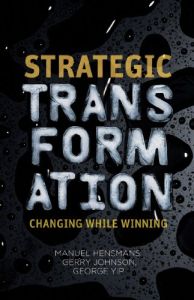Join getAbstract to access the summary!

Join getAbstract to access the summary!
Manuel Hensmans, Gerry Johnson and George Yip
Strategic Transformation
Changing While Winning
Palgrave Macmillan, 2013
What's inside?
Learn about the characteristics of successful strategic corporate renewal.
Recommendation
Professors Manuel Hensmans, Gerry Johnson and George Yip spent five years on this in-depth study of corporate strategic transformation. They chose three UK companies as models of successful transition and three others that succumbed to a degree of “corporate drift.” They identify three basic strategic concepts and four essential traditions embraced by companies that successfully changed. They emphasize the value of corporate history, measured conflict and alternate coalitions. As a company dodges an onrushing disaster, another crisis looms and then another, but the successful organization morphs and profits all the while. The authors discuss the tactical significance of company traditions, founding principles and fluidity in a chaotic world. getAbstract appreciates their solid, groundbreaking views, as will planners, change theorists and executives wise enough to know that a potentially crushing threat awaits just over the horizon.
Summary
About the Authors
Manuel Hensmans teaches strategic management at Solvay Brussels School of Economics and Management, ULB. Gerry Johnson is emeritus professor of strategic management at Lancaster University School of Management. George Yip teaches management and is co-director of the Centre of China Innovation at the China Europe International Business School.

















Comment on this summary